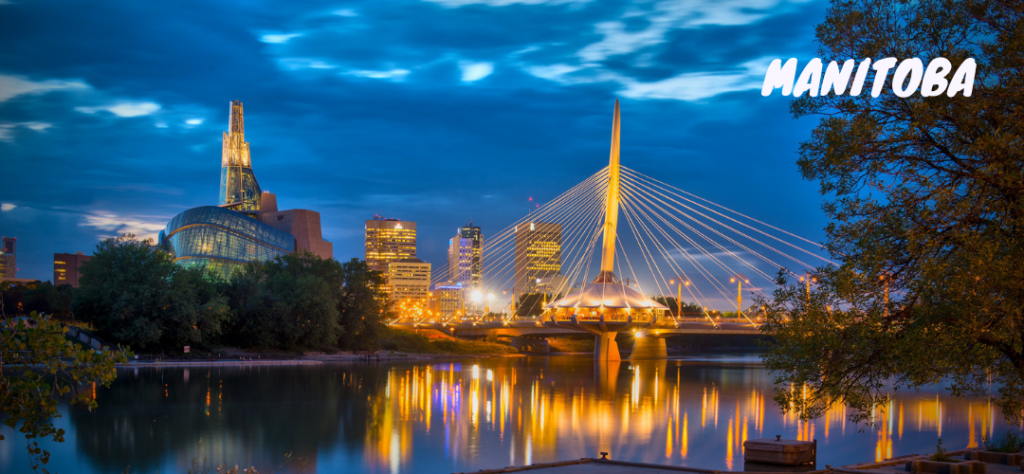
Manitoba is in the center of Canada. It limits with Nunavut to the north, Saskatchewan to the west, Hudson Bay and Ontario to the east, and the American states of North Dakota and Minnesota to the south. One of the three Prairie Provinces, its name means “where the spirit lives” in the native Cree language. The population is estimated to be of 1,360,396 people, and the total area is 649,950 km2.
 Quick Facts about Manitoba
Quick Facts about Manitoba
· Manitoba has the largest Icelandic population outside of Iceland.
· The average salary is $ 174.000 a year, and the minimum wage is $ 11.65 an hour.
· It is one of the most affordable provinces in which to live, it has the lowest costs for housing and electricity.
· The majority of Manitobans identify themselves with Christianity (mostly Catholics), and there are also Jews, Buddhists, Sikhs, Hindus, Muslims, Indigenous beliefs and pagans.L’Université de Saint-Boniface is the only French-speaking university in Manitoba.
· The city of Churchill is called “The Jewell of Manitoba” because people can see belugas and northern lights, and “Polar Bear Capital” because polar bears go out and about the city and walk in its streets in the fall, just like any other resident.
· Some 15,000 immigrants arrive in Manitoba each year.
· The province has been inhabited by Aboriginal people for thousands of years.
· The city of Steinbach, not far from Winnipeg, is a city founded by Russian Mennonites who moved there in the XIX century. It is now a Mennonite Heritage Village, and the locals are their direct descendants. It is a thriving city, very open to immigrants.
 Main Cities
Main Cities
The biggest and most important city in Manitoba is the capital, Winnipeg. A city with a high spirit for sports, it is located where the rivers Red and Assiniboine meet. It is the largest city in Manitoba and one of the coldest in Canada. It has a multicultural vibe and many places to see and visit, and it holds many festivals along the year, like the Jazz Winnipeg Festival, the Winnipeg Fringe Theatre Festival, among others. Downtown Winnipeg if the economic and financial core, and the Exchange District, built in the XIX century, is a National Historic Site of Canada. It has the highest percentage of Aboriginal people living in any big Canadian city. The highest rate of employment comes from the educational, manufacturing, trade, Health care and social assistance areas.Brandon is the second biggest and teeming city in Manitoba. Located at about 200 km from Winnipeg, its economy is based on trade, agriculture, education, food processing and health care. It has many museums and art galleries and other cultural sites, and it’s an important cultural center in the province.
 Education in Manitoba
Education in Manitoba
In Manitoba, as in the rest of Canada, education is compulsory and responsibility of the provincial government. Both the Public Schools Act and the Education Administration Act are the most important rules for the sector in the province. There are funded independent schools, boarding schools (that follow Manitoban curriculum), and non-funded independent schools. Children must start their education since they’re six years old until they’re 18, and parents are responsible for sending them to school. The school year varies, always depending on the date the first Tuesday after Labor Day has. There are public schools regulated by school divisions (school districts).